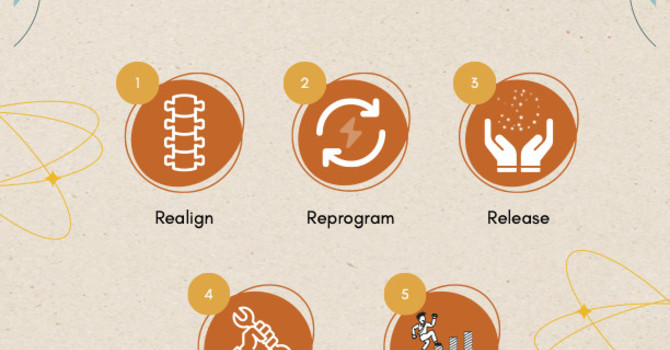
Case Study:
I recently treated a marathoner with a history of a non-repaired labral tear and tendonitis of both outer hips.The outer glute muscles, known as the Glut Medius muscles, are considered the lateral stabilizers of the pelvis. She had received physical therapy but was still in chronic pain and unable to run without worry of further hurting herself. It is not uncommon that I see patients who have either failed surgery or chosen to not receive orthopedic intervention. In some cases I am not able to help if the joint in question lacks sufficient stability, but in many of these cases we've gotten the patient their life back, doing the things they love to do, by raising their functional threshhold by correcting and optimizing the structures and the interplay amongst them that lead to the problem in the first place. The lesson I've learned over the years is that the area of pain often isn't where the problem started.
Treatment Used:
Chiropractic Adjustments: Treatment included a full chiropractic evaluation and corrections of th lower spine, pelvis and extremities (hip, knee, ankle and foot joints)
PDT-R (Proprioceptive Deep Tissue Reflex technique): PDTR was used to assess and to rebalance the Mechaniceptors in the Pelvic floor muscles, Glutes, Abs, Psoas, Quads, TFL, Diaphragm, and Quadratus Lumborum (QL). I assessed and corrected altertions of gait affected by the gravity-sensitive foot and ankle ligaments, as well as Pain receptors (Nociceptors) in the Lt femoral joint (the outer hip joint) affected by the compression of when the forward foot hits the pavement.
When I assess and treat a patient, I use many techniques and approaches, since no one patient is the same, even if they have the same diagnosis. With this patient, I used some of the following approaches as well, to lead them back to near-full functionality:
ART (Active Release Technique) was used as the Gold Standard of specific pin & stretch muscle release work. The ART practitioner is trained to identify, isolate and release any of the 600+ specific bound-up skeletal muscles in the body.
Cupping (Myofascial Decompression using traditional chinese medicine suction cups) was used to decompress areas of muscle spasm. This is the only way to create space and literally pull muscle fibers apart from each other. All other myofascial systems incorporate compression (pushing into the muscles).
Fascial scraping (a smooth-edged surgical metal tool) was used to iron out the connective tissue over the muscles, helping to release fascial adhesions binding groups of muscles together.
Rocktape (Kinesiology Tape) was used to help decompress and release adhesions between the layers of the skin, fascia and muscle, and reinforce proper fascial feedback mechanisms.
NET (Neuroemotional Technique) was used at some point in care to address the runner's subconscious or unconscious belief systems around their ability to run without further getting hurt.
Discussion:
Running involves single-leg stabilization and requires a strong core, low back & glutes. It also stresses the entire closed kinetic chain from the foot on the ground through the ankle, knee and hip. It requires proper torso movement as well as proper leg and opposite arm movements in the running gait cycle. And when the forward running leg hits the ground, a closed chain circuit is created.
Muscles work much like lights on a dimmer switch or a car's manual transmission with a clutch; they're rarely all the way on or all the way off (side note: the only time you'll see a totally off muscle is paralysis and the only time you'll find a totally on muscle is rigor mortis!) but rather there's an intricate dance of "light" between opposite muscles, known as antagonists. For example, think about what happens when you lift your front leg when running - the hip flexors (think Psoas) turn up and the opposite muscles, the hip extensors (think glutes) turn down to allow this.
Mechaniceptors are little radio receivers & transmitters found throughout the fascia (connective tissue), ligaments and joints of the body. If the muscles act light light bulbs, then these receivers act like light switches. They pick up information about input such as vibration, pressure & stretch and tell the brain, which in turn determines what muscles need to work in order to keep the body safe.
Nociceptors are similar, except they tell the brain information about pain, such as hot, cold, pin prick & slap sensations, fine and crude touch.
In addition, once everything was "firing" correctly, I put the body into a gait pattern (opposite arm & leg, like in walking) and this showed all sorts of problems! Muscles and joints may be just fine when isolated, but working as a team it can be a whole nother can of worms! By correcting specific ligament receptors of the feet and ankles, I was able to resolve this issue, further ensuring that my runner will be OK when the rubber actually hits the road (I've included a video of this part of care).
Regarding the Mind-Body, the limbic system (the brain stem, otherwise known as the lizard brain or the old brain) works at the level of survival, and deeply help fears or beliefs, often from childhood, can sabotage all the good physical work we do. NET is a terrific system that's been around for 35 years and helps the practitioner clear up these "sabateurs."
The nervous system is such an intricate and dynamic feedback mechanism that allows our bodies to move in the world mostly without much thought and usually without pain. Most of this is done subconsciously, which is a very good thing! Just think of how much agonizing attention and hard work it takes for someone to rehab back after losing use of their limbs, where everything has to filter through the conscious mind!
This is a multi-pronged approach leaving no stone unturned. The result is a bullet-proof path back to training safely with a goal to run again!






